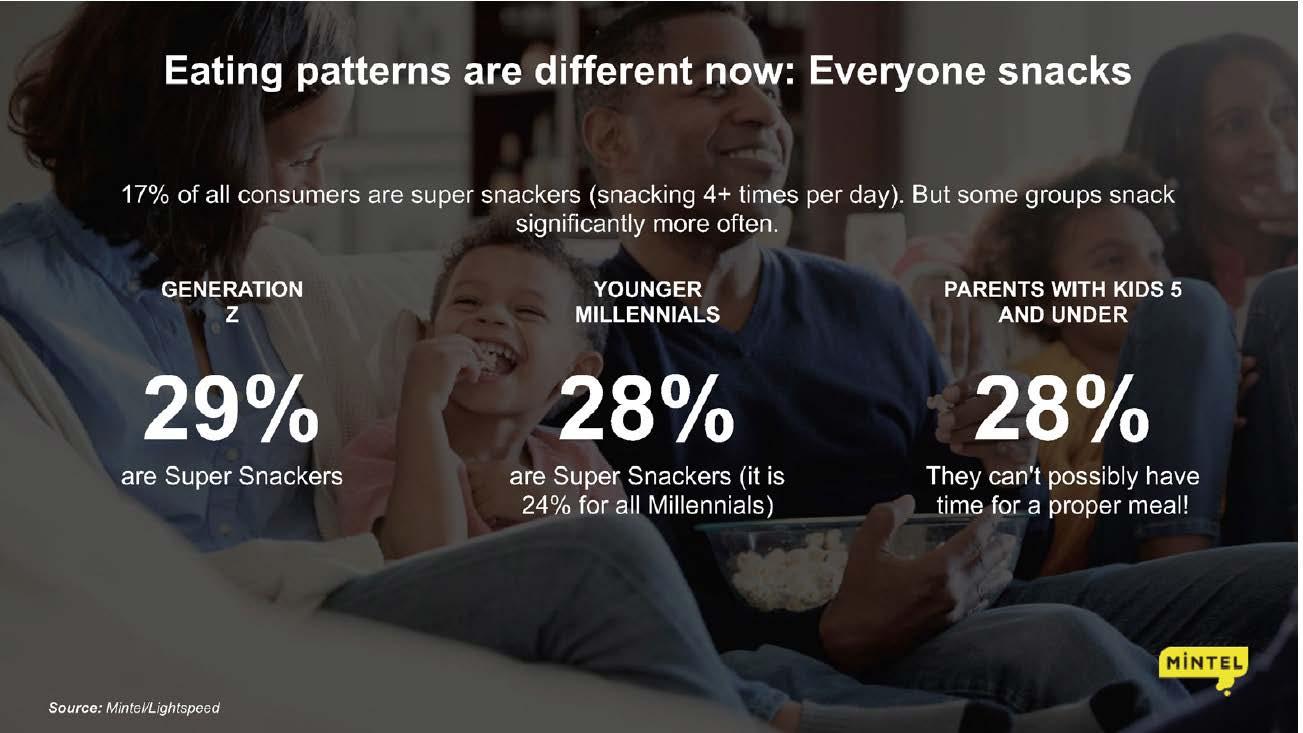
3 minute read
Emerging opportunities - new methods
New technologies are leading to new food production possibilities, such as lab-grown meat. A good
example of this is the work being carried out by Californian-based Finless Foods, which grows edible
sources of protein from isolated fish muscle cells. These cells are fed salts, sugars, amino acids and proteins,
and developed into 3 important cell types that form muscle fibre. 15
“It not only doesn’t involve killing animals for food, it not only doesn’t involve
destroying the ocean ecosystem, but it also can create fish that is extremely fresh
and completely mercury and plastic-free, as well as being growth hormone-free
and antibiotic-free.” 15
Mike Selden, Co-Founder, CEO, Finless Foods told Fi North America and SupplySide West 2019, Food ingredients Theater attendees.
“At the end, we are left with a high-quality ingredient, high-quality cell paste that
has all these qualities currently found in fish.” 15
Selden’s point is that this technology is not only sustainable and environmentally friendly; but also, potentially cheaper and faster than traditional production methods. Tuna farming, for example, has been a failure and the amount of tuna caught in the wild is strictly controlled. Growing tuna meat in the lab could therefore be a highly efficient way of meeting market demands; while only a percentage of a catch will end up on someone’s plate, 100% of the meat grown in the lab is edible.
Selden said:
“This technology could also revolutionize the way seafood is distributed. Instead of
needing a distribution network from the boat to the consumer, a more localized
distribution system centred in dense urban cores can be created.” 15
In other words, tuna meat could be produced in a lab in a city like Las Vegas, for example, and delivered directly to nearby restaurants and shops.
One reason why lab-grown meat is increasingly seen as a viable investment is because what consumers consider to be acceptable, is changing. The same is true for insect-based protein. This is in part due to growing interest in sustainable sources of protein, as well as demand for adventurous culinary experiences. Insect-sourced protein therefore signals more than just the emergence of a new potential source; it underlines appetite for a complete rethink of current agricultural methods and technologies.
Moving away from extraction-based monoculture, towards a more holistic ecosystem approach to
food production, is something that Pat Crowley, founder and CEO of Chapul, sees as beneficial for the
environment, for our health, and for businesses looking to tap sustainable sources of protein. 16
Pat told Fi North America and SupplySide West 2019, Food ingredients Theater attendees:
“My background is in studying watershed hydrology. From an ecosystem-based
point of view, the more insect diversity there is in the water, the healthier
the ecosystem. As biodiversity increases, you are less likely to have viral
outbreaks, etc.” 16
Crowley takes the same approach to food systems: for him, this is not about good versus evil, or plantbased versus animal-based; rather, it is about taking a holistic view to rehabilitating damaged ecosystems from the ground up. The more plants and animals, fungi and bacteria can be added to an ecosystem, the healthier it will be. Similarly, the more balanced our internal ecosystem of gut bacteria, the healthier we will be.
“Microbes are the drivers of life on this planet, and it is beneficial to look at them as
an ecosystem; whether in our intestines or in the soil,” 16 explained Crowley.
To this end, insects can be seen as containing ecosystems of microbes. Crowley described them as nature’s bio-processors, taking in organic material and increasing the bioavailability of nutrients like proteins. He said:
“We take plant material, add native fungi and the output is a protein-rich insect.” 16
Scaling up this biological process to meet global demand for protein will require trailblazers, but Crowley is confident that innovations like this, grounded in solving societal issues, will attract consumer interest.
“This is especially true for younger consumers. Solution-based supply chains can
be an excellent conduit for storytelling.” 16






